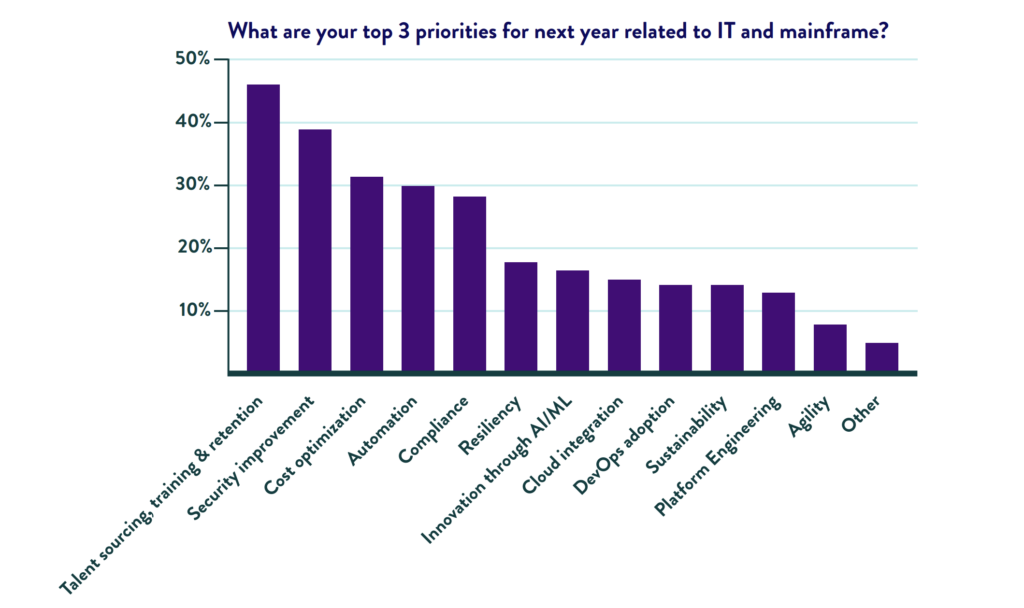via Derek Britton and Planet Mainframe
The mainframe industry has been analyzed and debated for decades as users, analysts, and vendors try to decode its evolving market dynamics. Now into its seventh decade, the platform has seen shifting needs, expectations, and innovation cycles.
Keeping Tabs
As a community, we are grateful to those who invest their time and resources in taking the pulse of the market, enabling us to better understand the needs of our customers. This, in turn, allows suppliers in the space to align their strategies and technology roadmaps more effectively. Major vendors, such as IBM, Broadcom, BMC, and Rocket Software, regularly test market viewpoints, while analyst organizations supplement this with their own efforts, as do market community groups and publishers, including the Open Mainframe Project, SHARE, and GSE.
Last but by no means least is the long-running Arcati Survey, often dubbed the Yearbook, which has been running since 2005. This year’s edition, the Arcati Mainframe Navigator, offered a fresh batch of insights into the minds of mainframe market leaders.
Here are a few interesting takeaways from the report.
Linux on the Rise
Linux adoption and Java-based applications continue to grow. 32% of respondents use IBM LinuxOne, primarily for development/testing (48%). Over half, 54%, integrate LinuxOne with IBM Z.
At PopUp Mainframe, we see this trend reflected in client engagements.. We see clients looking to maximize value from their mainframe ecosystem, including the flexibility provided by Linux. One popular use-case we are seeing is organizations looking to leverage the flexibility and cost-efficiency of Linux for application development and testing activities. This allows greater flexibility of resourcing for innovative and creative projects, while ensuring the capacity on Z for production workload remains as high as possible.
DevOps: Progress, but Still a Climb
Only 25% of survey participants describe their DevOps maturity as high. Unit testing (37%) and functional testing (35%) are gaining ground, but many organizations are still navigating toolchain complexity and skill shortages.
This echoes our observations: most organizations we speak with have a solid DevOps strategy but continue to work towards modernizing their SDLC practices and tooling. One challenge they often face is the bottlenecks of resource availability in terms of mainframe time, toolchains, and skills. As business requirements for higher delivery velocity continue, organizations will seek greater flexibility and throughput in their mainframe DevOps practices.
Training & Talent: The Never-Ending Challenge
This year’s Arcati survey reports that organizations must upskill their employees while attracting new talent to meet the growing needs of modernization. The most in-demand mainframe skills are advanced programming (55%). Training is provided primarily through internal training (77%) and in-house training programs (54%).
We regularly hear that budget constraints make it hard to justify training infrastructure that isn’t directly tied to revenue. That’s a barrier the industry must overcome if it wants to keep up with modernization goals.
Priorities, Pain Points, and Potential
We read from the Arcati report that while organizations prioritize modernization, security, and talent retention, challenges like skill gaps, costs, and misconceptions hinder progress. Addressing these barriers is key to maximizing mainframe investments.
According to the report, talent sourcing and retention (46%) are the top priorities, yet 62% cite a skills gap. Internal training, partnerships, and certifications are essential to closing this gap. Cost optimization (31%) is a key goal, yet 48% cite high maintenance costs. True savings come from better coding, resource optimization, and automation, not just cost-cutting. Automation (30%) and compliance (28%) are priorities, but integration challenges (18%) slow progress. Hybrid cloud strategies and DevOps adoption can improve agility.

We concur with this data and these perspectives around priority. The mainframe is a critical business server environment and is vital to organizational success. Yet skills, training environments, high costs, and inadequate compliance are hampering necessary improvements. Greater flexibility in terms of automation, DevOps adoption, and innovative tooling could greatly reduce the cost of change and accelerate mainframe-driven innovation.
Mainframe Evolution Is Ongoing
As the mainframe ecosystem – one that boasts over six decades’ lifespan — illustrates better than most, market evolution is never done. Only a generation ago, the mainframe market surveys would have seen no mention of cloud, DevOps, or observability. AI’s inclusion as a topic of interest has only appeared in the last few years. Things are changing under our noses, and in a generation’s time, who could predict what the mainframe market will look like?
That’s why continuing to check in with the market makes so much sense – the most powerful and important viewpoint of the mainframe world, in the final analysis, is that of those who use it to run their organizations.
To that end, we’ll be launching our own market survey this year to capture fresh insights and emerging patterns. We’re taking a slightly different approach, and we’re excited to share what we learn.
A community thrives when it keeps talking, and we are delighted to be part of that conversation.

